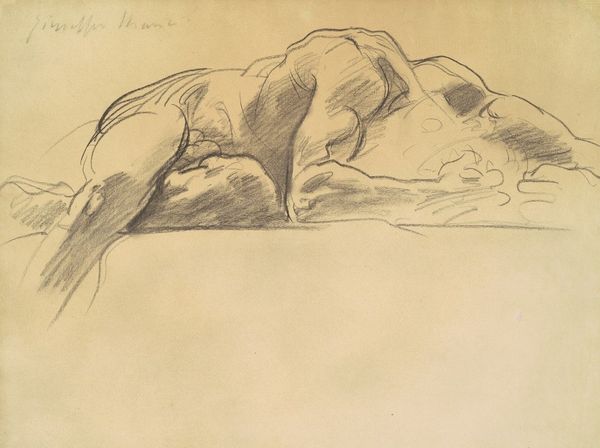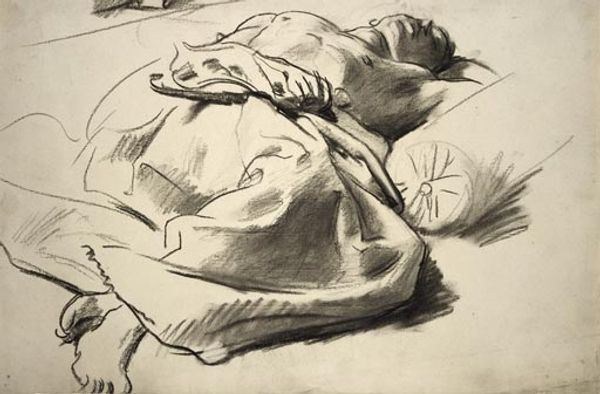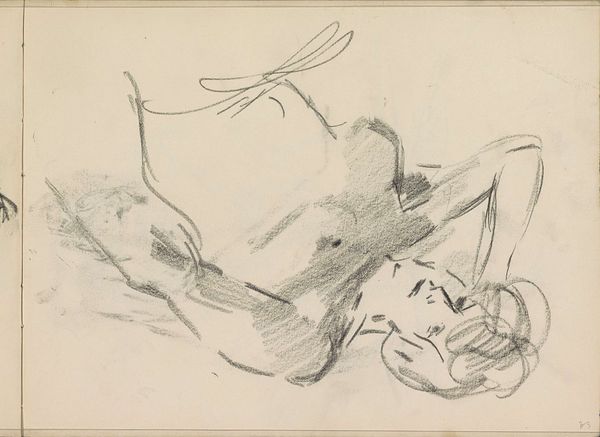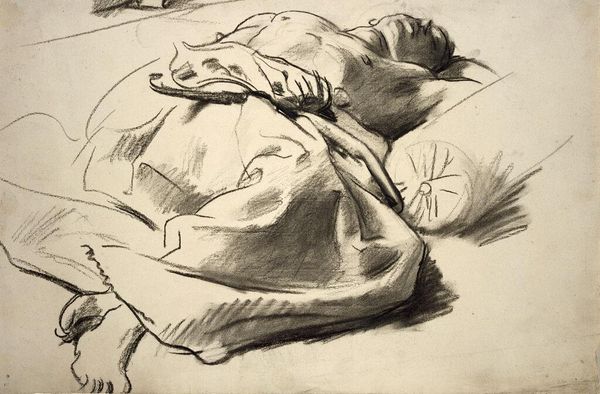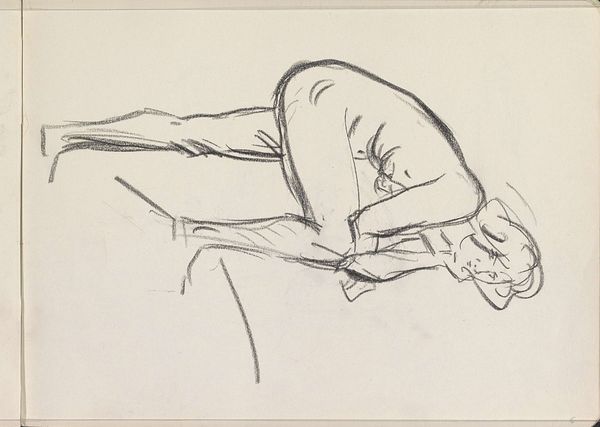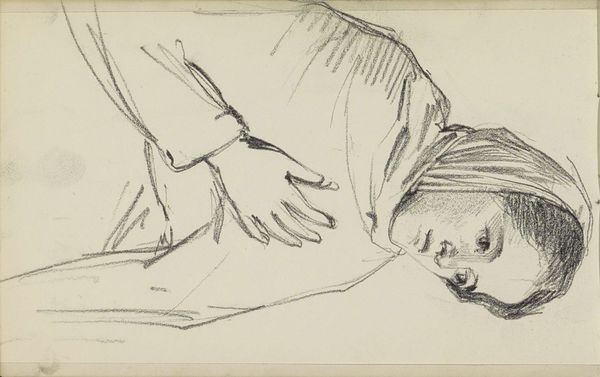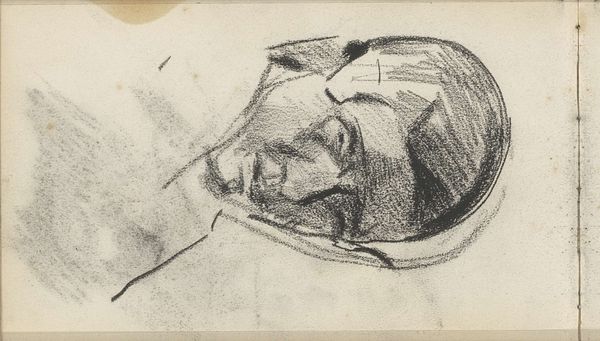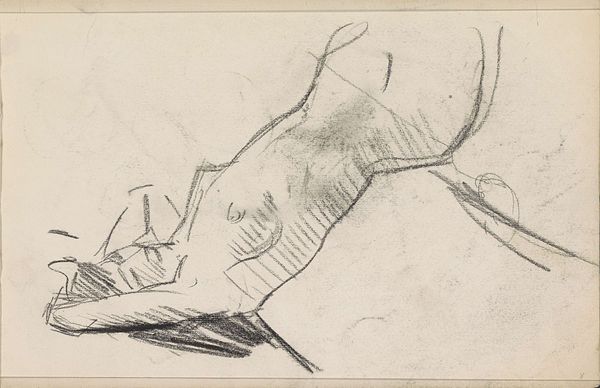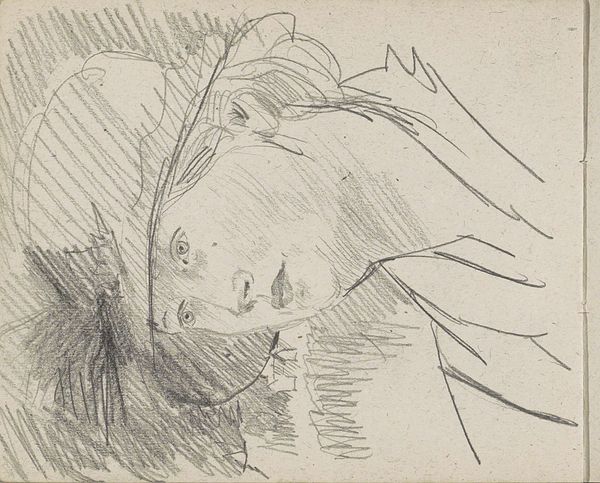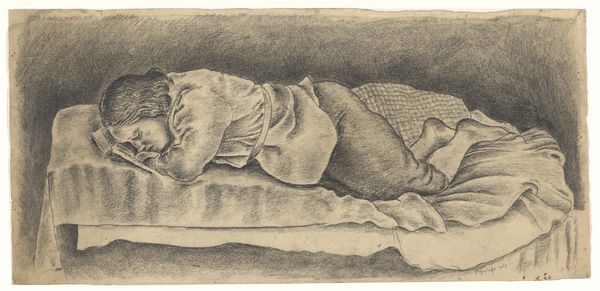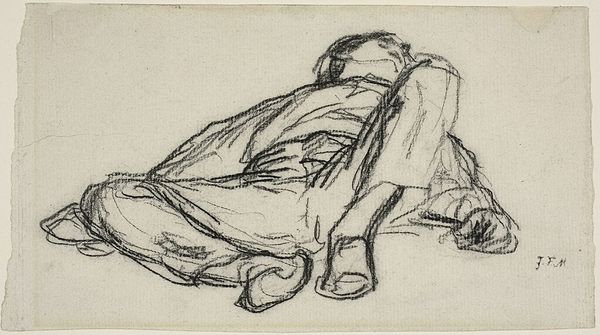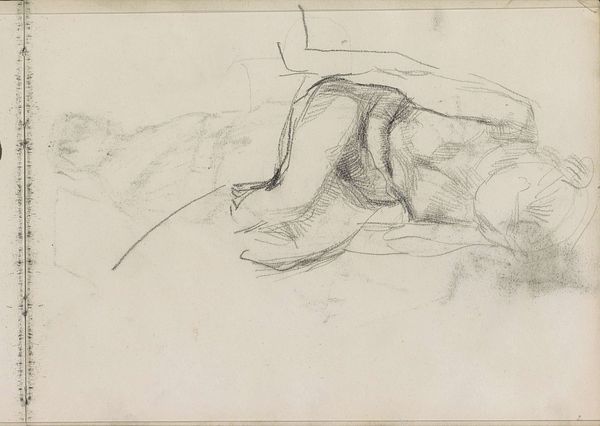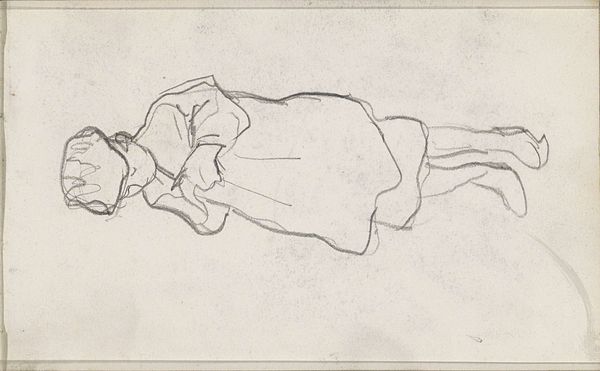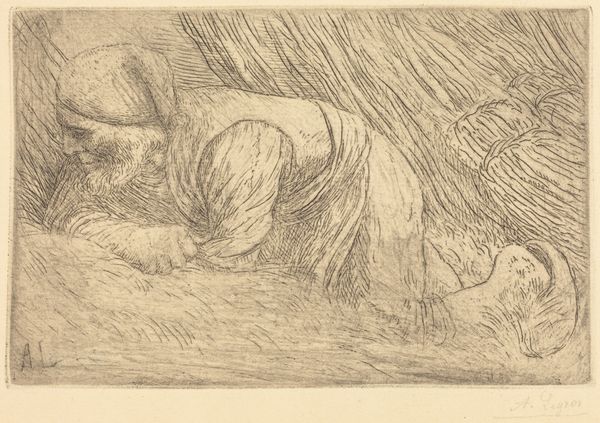
drawing, dry-media, pencil
#
portrait
#
drawing
#
pencil sketch
#
figuration
#
dry-media
#
pencil
#
academic-art
#
realism
Copyright: Public Domain: Artvee
Editor: This is "Etude de draperie et étude de doigts," a pencil drawing by Pierre Puvis de Chavannes, made around 1854-1855. It feels so intimate, almost like a glimpse into a private practice. What strikes you most about this piece? Curator: The intimacy you feel is interesting, isn't it? It speaks to the ways in which academic studies like these often unintentionally reveal aspects of the artist's relationship to their subjects, even when those subjects are inanimate. Consider the context: academic art in the mid-19th century. How might the rigid structures of artistic training – focused on mastering form and technique – both reveal and conceal broader social attitudes towards the body, particularly the draped female form? Editor: So you’re saying even a seemingly simple drapery study might reflect how society viewed and controlled the representation of women? Curator: Precisely. Notice the fragmented nature of the study - disembodied hands, carefully arranged fabric. This is not about representing a whole person, but rather about mastering specific elements. How might this reduction relate to broader societal fragmentations and objectifications, especially concerning the female body in art and culture at the time? Editor: I see. It’s like the artist is dissecting the image, and maybe, unintentionally, reflecting how women were dissected metaphorically. It makes you think about agency and representation. Curator: Exactly. And where do we locate the agency of the artist here? Is Puvis de Chavannes complicit in these societal attitudes, or is his meticulous study a form of observation that indirectly critiques them? Or something else entirely? Editor: I hadn't thought about it that way. Seeing it as a reflection of societal norms, even in something seemingly so technical, adds so much depth. Thank you. Curator: It's through this lens, connecting the artwork to broader cultural narratives, that we can truly start to unpack its complex meanings. I'm glad we could look at this piece together.
Comments
No comments
Be the first to comment and join the conversation on the ultimate creative platform.
